ARK-C2503 - Digital Storytelling, Lecture, 2.3.2023-13.4.2023
This course space end date is set to 13.04.2023 Search Courses: ARK-C2503
Översikt
-
Re:public - City Dreams
“If the new language of images were used differently, it would, through its use, confer a new kind of power. Within it we could begin to define our experiences more precisely in areas where words are inadequate. (Seeing comes before words.) Not only personal experience, but also the essential historical experience of our relation to the past: that is to say the experience of seeking to give meaning to our lives, of trying to understand the history of which we can become the active agents.”
John Berger, Ways of Seeing
Originally a name for a group of like-minded architects, over the years Re:public evolved into a concept of action, a way of seeing and interpreting the environment. In this text, it will also be referred to as an agent in its own right, independent of ones who adopt its philosophy. For Re:public, the city is the center of attention. It calls for the renewal the way we regard the city. Its name reflects the original derivation of republic - res publica - that which belongs to the people, the public realm, our common ground.
Between the monuments of a city and its well-defined places; between its squares, streets and districts there is a kind of space that is usually only subliminally registered. These are places that to many might seem dislocated, unremarkable – or they might be places that remain unseen, obscured by their location or by their ubiquity. These are spaces that are in-between or throughout what we normally consider to be places: spaces that exist in parallel, alongside the familiar. These spaces are part of the subject at hand: but Re:public sees them not as a kind of exotica, as curiosities, but rather as offering a complementary series of archetypical figures that are part of the language of the city - our common heritage, our common culture.
This course directly builds up on the ARK-C0011 - Basics: Digital Storytelling course and is recommended for bachelor students of architecture, interior architecture and landscape architecture in their first year of studies. Its intention is to expose students to critical observation of their immediate environment and to employ digital collage as a storytelling device. It is a short but intensive course lasting for seven weeks, with weekly inputs and assignment work. Students will work individually to produce digital collages using Adobe Photoshop which will form a collective body of work, shown side by side as they tell the story of a city and its spaces. This course’s content and topic are designed together with TEN Studio, members of which have initiated and conducted previous Re:public workshops.
(Note: The above text is adapted from “Drawing oneself into place” written by Philip Shelley, which appeared as an introduction to the first Re:public exhibition catalogue in 2014)
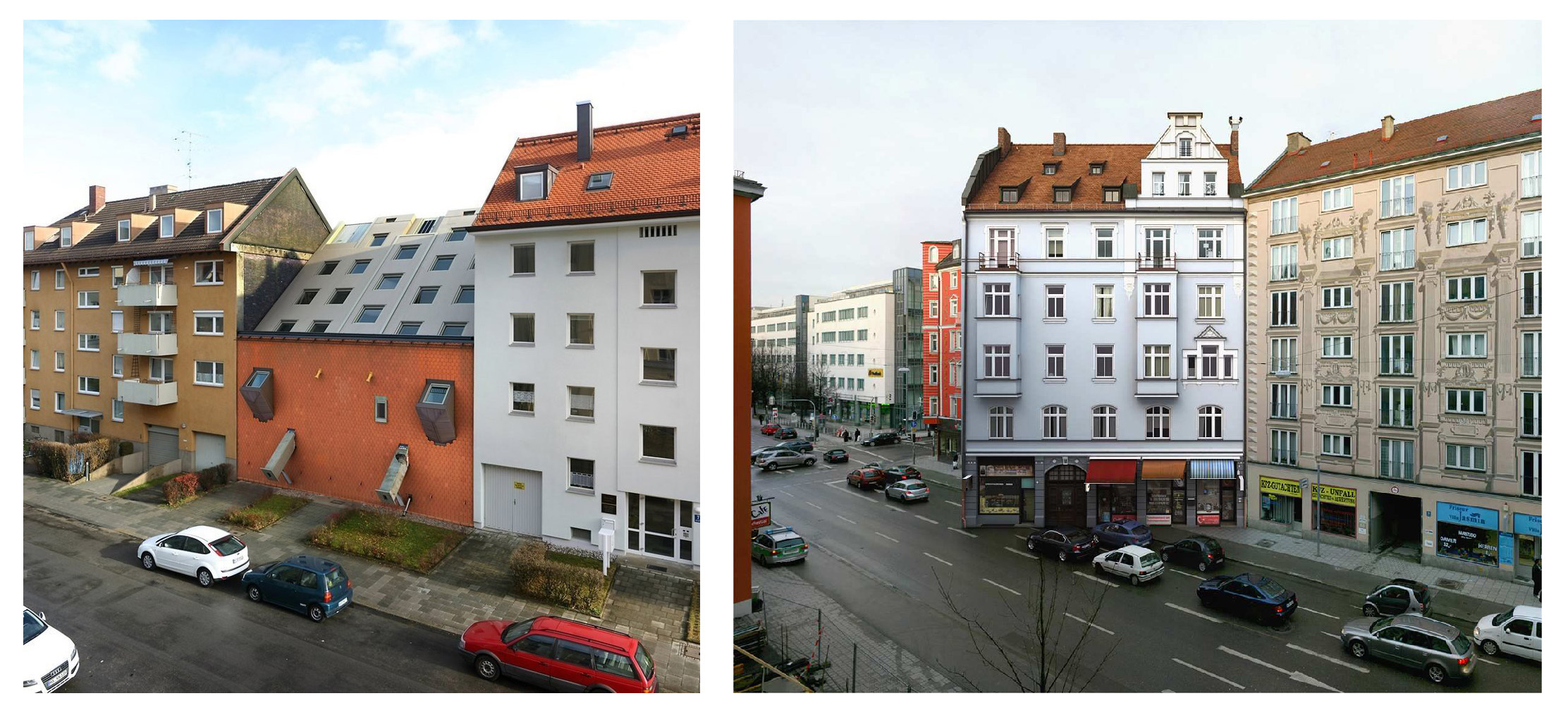
Digital collage by architect Victor Enrich
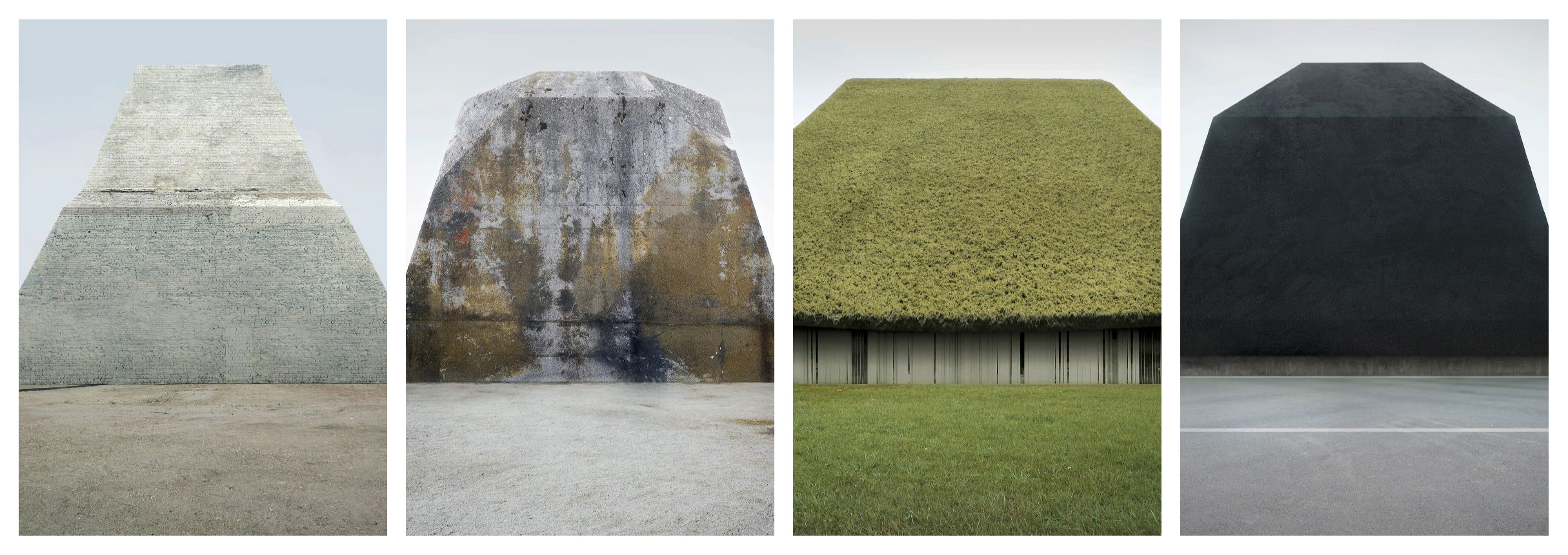
Digital collage by architect Philipp Schaerer
Course goal
Didactic goal of the course is to engage students with the digital tools they will use daily in their professional work in design offices. Rather than focus on the design task (which is the focus of design courses), the students are required to learn digital collage workflow and apply it as a storytelling device to a specific assignment. For this course students will use Adobe Photoshop software, an industry standard. The assignment consists of producing one digital collage image which exhibits student’s observation and interpretation skills as well as basic familiarity with image editing software.
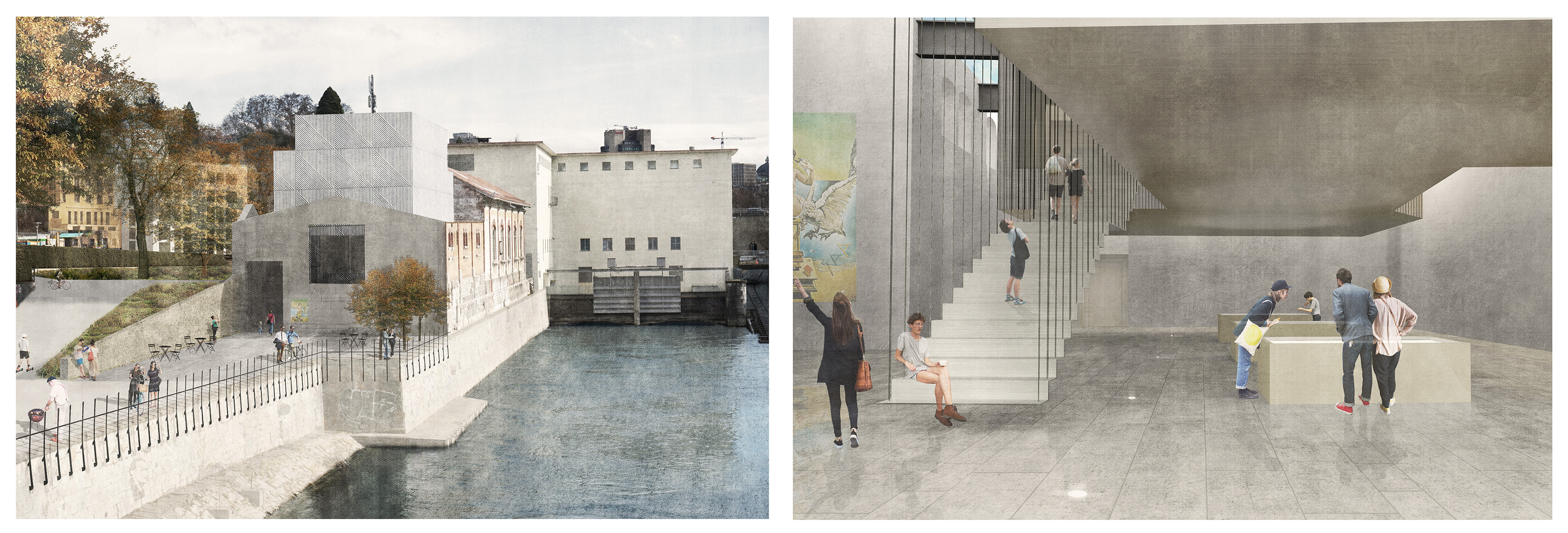
House by the Limmat, digital collage by architect Stephane de Weck
Learning outcomes
The students will learn basics of image editing and raster collage in Adobe Photoshop and develop their skills through working on a single speculative image. At the end of the course the students will gain familiarity with the raster and image editing digital design workflow and gain confidence to continue developing their skills further through design courses. Digital design workflow topics that will be covered in the course include:
- basics of digital photography and image editing in Adobe Photoshop
- digital collage and image composting
- design visualizations using raster and hybrid workflows
- advanced image editing techniques - style transfer and image hybrids
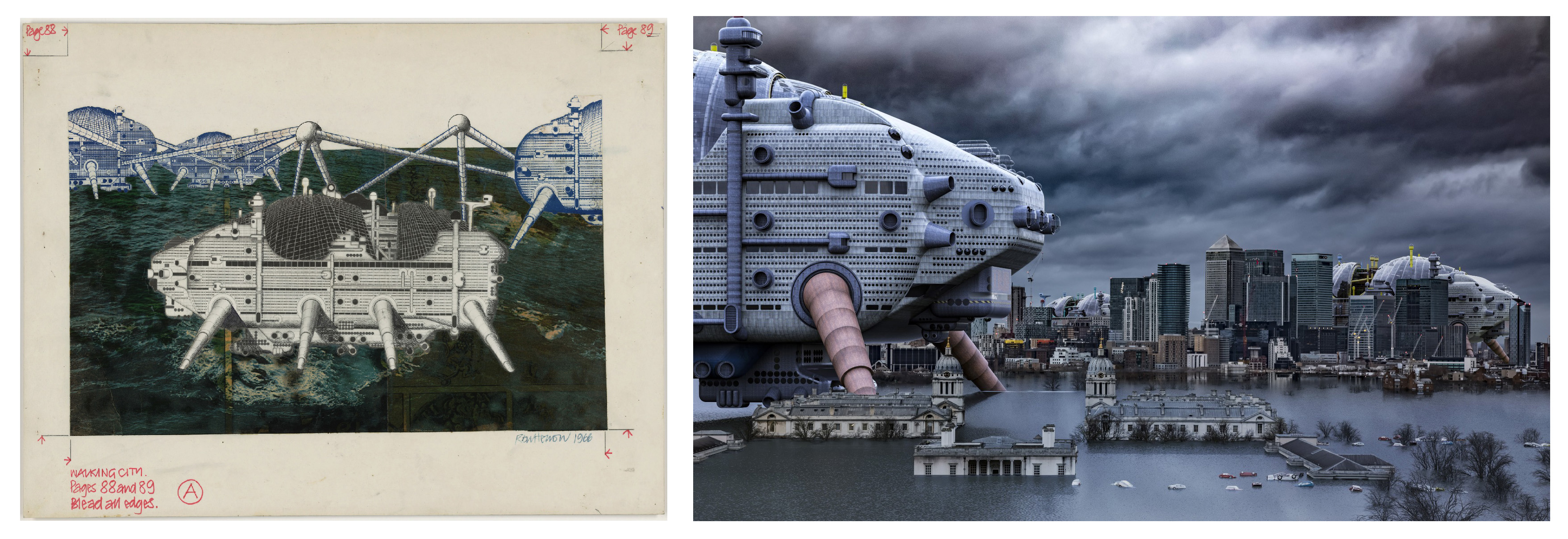
Analogue collage (left) by Archigram, and a digital collage (right) by ATKINSON+CO
Assignment deliverables
1 x raster image collage (JPG format) in color
Dennis Stock’s iconic portrait of James Dean in Times Square showing a plan for adjustments during photo development
Assessment methods and criteria
Students will be evaluated based on the submitted assignment at the end of the course. The submitted assignment needs to follow the assignment guidelines which will be clearly communicated in the task description together with reference examples at the beginning of the course. Evaluation criteria fall into three groups:
Formal
· Assignment is within assigned topic and scope.
· Assignment is submitted on time for evaluation and in correct format.
Skill
· Assignment demonstrates student’s ability to engage and work in an independent fashion in the digital design workflow shown in the class.
· Assignment demonstrates that the student invested the designated amount of independent study hours to master the software and equipment used in the digital design workflow shown in the class.
Integration
· Assignment demonstrates student’s ability to express and facilitate design ideas in a clear and uncompromised fashion using the digital design workflow shown in the class.

Style transfer as an advanced image editing technique applied to a photograph of a mountain range in Tirol, Austria, by TEN Studio
Workload
The course includes 4 hours per week of online teaching and self-study for 7 weeks. Included in this is the time for the completion of the assignment, which is mandatory for the successful completion of the course. Additional Q&A sessions with the teacher will be provided.
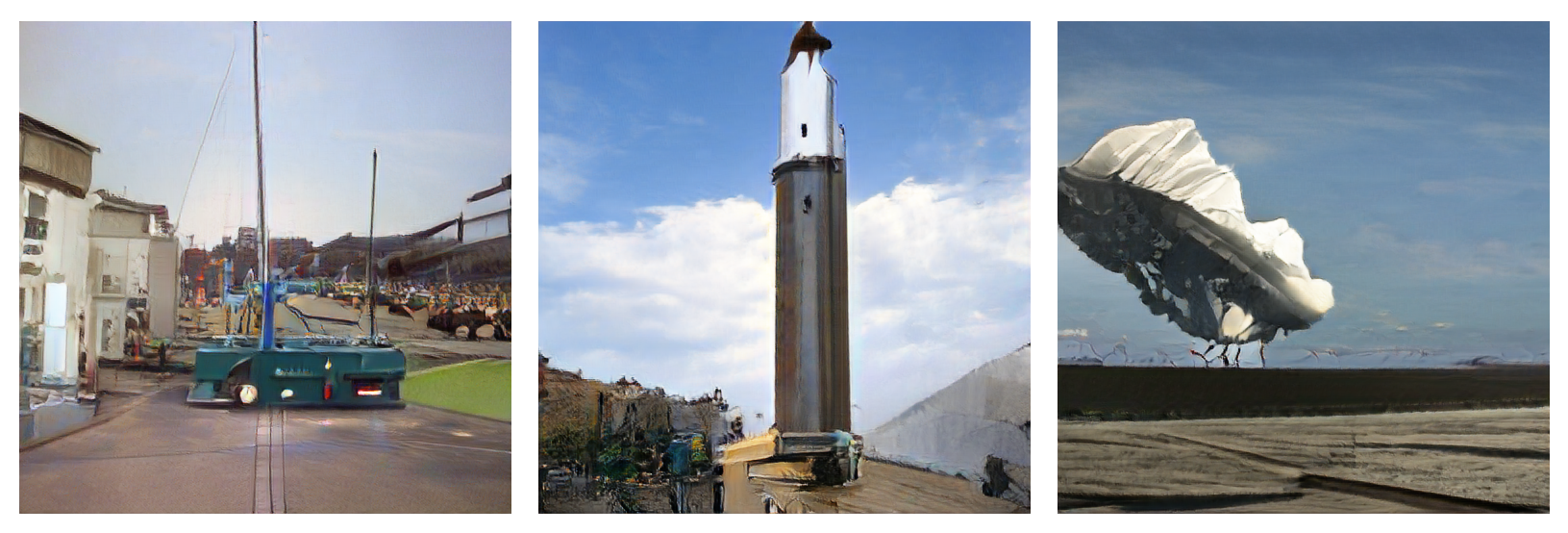
Image hybrids of various objects obtained using BigGAN script - drilling platform and cash machine (left), monastery and bolo tie (middle), volcano and saxophone (right), by TEN Studio
Study material
Aside from the online lectures and practice sessions, students will be provided with online video tutorials covering the same topics as in the class. These can be used by the students during their self-study hours and are meant to repeat as well as expand on the topics shown in class. Practical information in condensed form will be included in the course hand-outs prepared specifically for the class. All learning materials will be provided to students in digital form. The moto of the course is “Learning by doing” and the students will be required to practice their skills directly on a provided assignment.
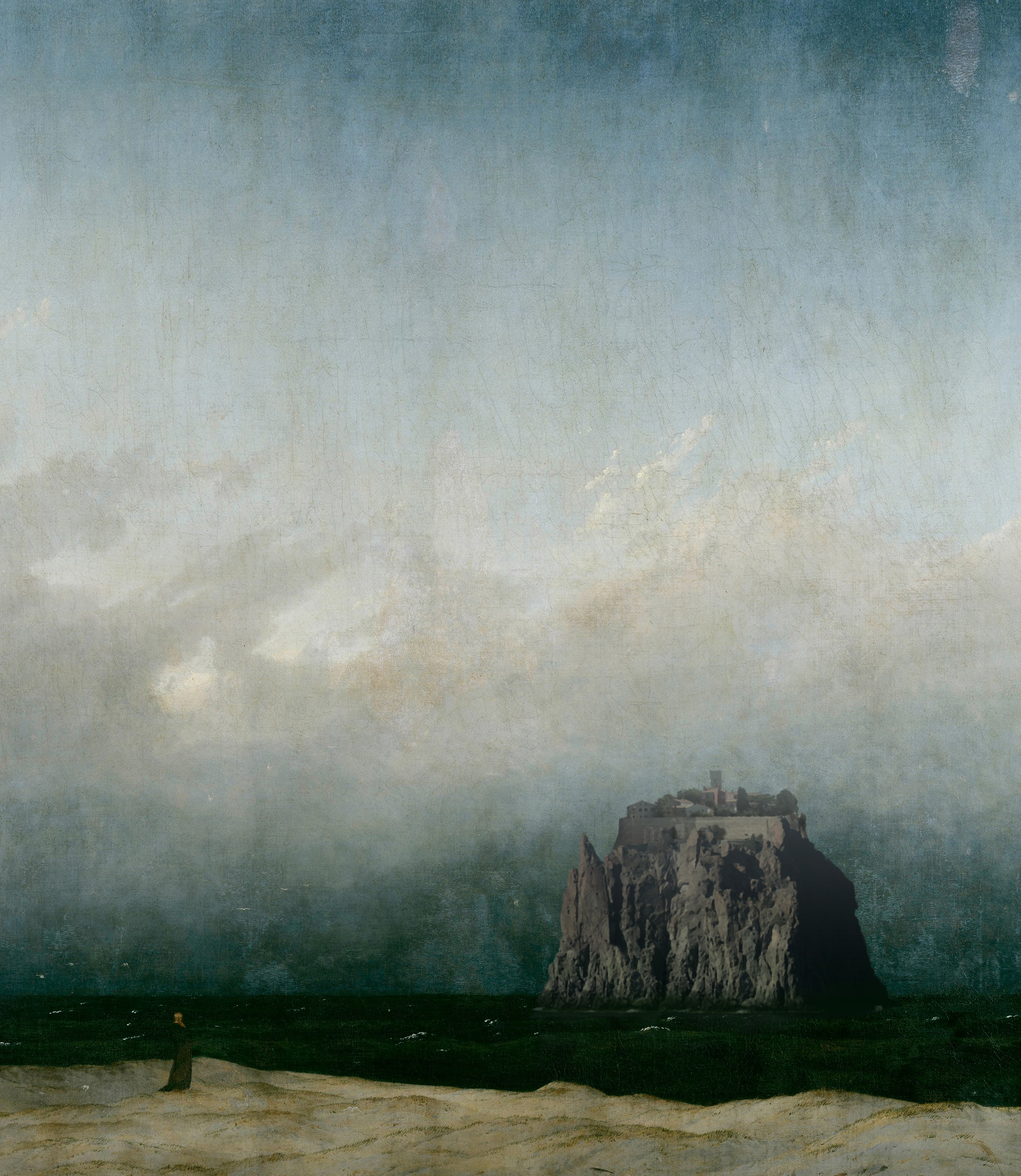
Digital collage made during Re:public Motovun student workshop in 2016
Software
To follow the practice sessions of the course as well as to complete the assignment, you will need to have access to Adobe Photoshop on your system. There are two ways to do this:
· When the public health conditions permit, you can access computer workstation in the school at various locations. Adobe Photoshop is available through Adobe Creative Cloud on all Aalto ARTS workstations, for example in Y338 computer room in Otakaari 1, or any computer room in Väre building.
· Get access to all Adobe software on your own system through Adobe Creative Cloud for students (you would need to purchase the subscription by yourself though). More information on this site (in Finnish).
